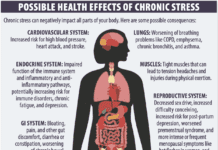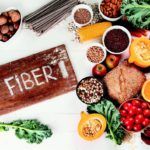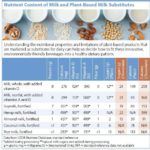Home Search
gum - search results
If you're not happy with the results, please do another search
Nutrition 101 – Glossary – S
Saccharin – Definition - Saccharin is an artificial sweetener that is 200-700 times sweeter than sugar and approved for use by the FDA. Relevance...
Nutrition 101 – Glossary – P
Paired Testing – Definition – Testing blood sugar (glucose) before and after an activity or event, such as eating or exercise. Relevance – This...
Nutrition 101 – Glossary – G
Gait – Definition – The process of walking. Relevance – As a person ages, gait (walking) speed can be used as an indicator of...
Nutrition 101 – Glossary – C
C-reactive protein - Definition - Made in the liver, C-reactive protein (CRP) is a biomarker that indicates inflammation throughout the body when blood levels...
Sugar Substitutes: Helpful or Harmful?
Since the 1980s there has been an explosion of sugar substitutes in the marketplace. These artificial or highly refined natural compounds are used frequently in beverages and processed foods to lower total calories (so-called diet foods and beverages) or decrease added sugar (as in sugar-free or low-sugar products). The number of products available for use at the table or in cooking and baking at home has also increased. While these compounds are touted as calorie-cutting weight loss aids and an option to people with diabetes looking for sweet choices while sticking to their diet, questions about efficacy and safety have dogged them from the start.
Plant-Based and Unhealthy?
Experts agree plants should make up a large part of a healthy dietary pattern. Humans eat plant roots (carrots and radishes), stems (asparagus and celery), leaves (leafy greens), seeds (including whole grains), flowers (broccoli, cauliflower, artichoke), and the seed-bearing fruits of plants (including fruits, vegetables, beans, and nuts).
Are Added Fibers Good for Our Health?
It is recommended that adults consume between 25 and 30 grams of dietary fiber a day. The average American currently gets about half that amount. According to the latest Dietary Guidelines for Americans, dietary fiber is a nutrient of public health concern, meaning this low level of intake could actually be detrimental to our health. So, its potentially good news that food manufacturers are adding fiber to processed foods. But is that fiber as good for our health as fiber found naturally in fruits, vegetables, nuts, legumes, and whole grains?
Gum Disease May Raise Cancer Risk
Periodontitis, advanced gum disease caused by bacterial infection that damages the soft tissue and bone that support the teeth, may be linked to higher risk of certain cancers, according to a new study published in the Journal of the National Cancer Institute. The study, led by Tufts epidemiologist Dominique Michaud, ScD, analyzed data from dental exams of nearly 7,500 black and white older adults, and compared periodontal disease severity with incident cancers and cancer deaths during an average of 15 years of follow-up.
Nutrition and Plant-Based Milk Substitutes
The market for plant-based alternatives to dairy products continues to grow, as lactose intolerance, dairy allergy, veganism, environmental concerns, and other factors lead Americans to look for alternatives to dairy. So where do these beverages fit into a healthy dietary pattern?
Meeting Varied Dietary Needs
When gathering together for a holiday, or any other group event, people may bring different dietary needs to the table. In addition to varying taste preferences, individuals may have dietary restrictions for medical, religious, or even moral reasons, or they could be following a particular plan they believe will support health or weight loss. Before undertaking preparing food for a group, it can be helpful to have a basic understanding of some of the most common dietary restrictions.






























